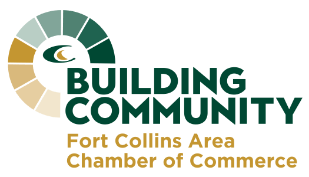Long-Term Capital Needs Shortfall
Through the Finance Subcommittee of the Fort Collins City Council, discussion has been taking place regarding the need for additional revenue streams to maintain, expand and improve community assets to a standard consistent with community expectations. Consistent with departmental master plans and the overall City Strategic Plan, the City will spend down $83M in reserve funds by 2025 due to projected revenue shortfalls in excess of $20M each year beginning in 2022 and reaching $30M by 2030. As presented by staff, there are three primary drivers of this deficit: Parks, Transit and Housing.
To implement objectives identified within the Parks & Recreation Master Plan, most recently updated in 2021, staff identified requisite operational and facilities improvements in addition to new facilities to accommodate new growth. Based upon current standards for Parks facilities, the department has identified $12.1M in unfunded needs through 2025 and $52M over the 20-year plan cycle. Annual operations and maintenance expenses will increase by approximately $1M (in current dollars), indicating a long-term operating shortfall.
The Transit Master Plan, updated in 2019, calls for a robust expansion of transit services to achieve greenhouse gas emission objectives mandated under the City Climate Action Plan, as well as providing more comprehensive service identified as a priority through outreach efforts. Although the City is in process of acquiring new buses and other improvements funded from federal stimulus allocations, an additional $8M-$10M in capital investments will be necessary by 2025 with an $9.75M needed annually to operate and maintain the system at build out. Over the build out period by 2040, an estimated $271-$308M (2021 dollars) will need to be sourced from various programs and strategies.
Under the Housing Strategic Plan, adopted by Council in 2021, the City seeks to achieve a housing inventory in which at least 10% of the housing stock is considered affordable to households earning 60% of the area median income or less. Currently, it is estimated that 5% of our current inventory serves that segment of our population. [Note: approximately 30% of households in Fort Collins meet that income threshold, meaning the City goal falls well short of actual demand.] Based upon current levels of subsidy per affordable unit, an additional $8-$9.5M in local investment will be necessary to achieve the inventory goal by 2040.
However, unrealistic assumptions were utilized to derive the $8-$9.5M annual investment. In consultation with subject matter experts, the Chamber has provided City staff an estimate that shows the actual annual investment necessary to meet the 10% housing goal will exceed $45M, or nearly $1 billion dollars by 2040 when considering a modest rate of inflation. To put the annual cost in perspective, a ¼-cent sales tax generates roughly $9M annually.
With little discussion devoted to cost-cutting measures, the Finance Committee has focused its attention on increasing revenue through existing and proposed fees, taxes and usage charges. Options being explored include: increasing the base sales and use tax rates; implementing a new dedicated sales tax; increasing property taxes; establishing/increasing “sin taxes” on sugary beverages and snacks, marijuana and alcohol; new/increased user-generated fees; establishing an occupational privilege tax; and, expanding the sales tax base to include services. Curiously, there has also been a call to impose a special fee on any new home that exceeds 2,000 square feet of living space.
It is extremely difficult to understand the logic of raising the cost of products and services to achieve the priorities set by this Council. Recognizing that taxes and fees disproportionally impact lower income residents, how can our desire to be a more diverse, equitable and inclusive community be achieved if the cost to live in Fort Collins is artificially inflated?
The Fort Collins Area Chamber of Commerce avidly supports the fiscal concept of “living within one’s means”. As a business community, we encourage all residents and our many visitors alike to enjoy the plethora of public amenities that have been created through existing revenue sources. However, we also recognize that attempting to deliver upon outsized expectations can bankrupt even the most venerated of organizations.
This issue offers an ideal opportunity to reassess our community priorities and align municipal expenditures accordingly. As well, shortfalls of this magnitude compel City leadership to reassess how operations, maintenance and replacement budgets are constructed. We understand inflation is difficult to project and affects local government very differently than a household or most businesses due to the nature of what goes into the shopping cart. However, it has become evident that ongoing expenses have been underestimated for a considerable length of time.
As a reminder, under TABOR all new taxes and debt issuance must be approved by voters; fees and usage charge increases, and a debt work-around known as Certificates of Participation do not. At a work session on April 12, City Council will consider a Sustainable Funding Plan that may include elements that require a vote of the people. Presumably, such items would appear on the November 2022 ballot. Please consider reaching out to your Council representative now to express your concerns.
Chamber Resource
March 2022
